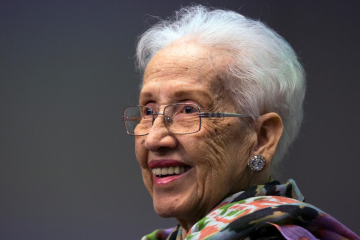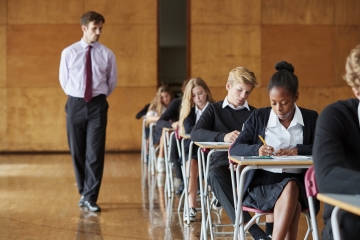In early November, Scott DiMauro, the President of the Ohio Education Association, went on the attack against public charter schools. In a piece in the Ohio Capital Journal, he analyzed report card data and supposedly found some “seriously alarming” results for school choice programs. But as is the case with several other anti-choice pieces that have been published over the last few years, his analysis is misleading and inaccurate. Let’s take a look at two of the most egregious statements.
Statement One: “Charter advocates often complain about comparing all school districts’ performance with charters, but last year, 606 out of 612 public school districts in the state lost scarce resources to charter schools.”
Charter advocates “complain” about this comparison because it’s purposefully misleading. According to the Ohio Department of Education (ODE), 114,374 students were enrolled in one of Ohio’s 315 charter schools during the 2020–21 school year. But nearly 95 percent of students who attend brick-and-mortar charter schools live in the state’s fifty-five urban school districts. That’s why we at Fordham focus so heavily on comparisons between urban charter schools and urban district schools.
Of course, brick-and-mortar schools aren’t the only charters in Ohio. The state is also home to fifteen virtual charters known as e-schools, and they enroll over 34,000 students. Because e-schools offer classes online and aren’t tied to a physical location, they can and do serve students from all over the state. It’s e-schools that make it possible for charter critics to claim that over six hundred districts “lose” tax dollars to charters and justifies, at least in their minds, the comparison to statewide averages.
But making that claim without context is misleading because it overlooks the scale of the alleged impact. There’s a big difference between a few students transferring to charters and hundreds of students doing so. Charter critics know that. They know that the vast majority of charter students live in urban districts. They also know that, on average, the percentage of students in each district who attend online schools is very low. And yet they make the purposely misleading comparison anyway.
It’s also disingenuous to claim that districts have “lost scarce resources” to charters. In a student-centered funding system, no school—district, charter, private, or otherwise—is entitled to students and the per-pupil funding associated with them. And if districts aren’t entitled to funds, then it can’t be considered a “loss” when they don’t receive them. That would be akin to a childless person claiming that they “lost” funding when they weren’t awarded a child tax credit, or officials complaining they have “lost scarce resources” when a family moves to a neighboring district. Families have the right to choose where to send their children to school (despite what DiMauro and other choice critics believe), and schools should be allocated money based on students they actually teach, not students they could have taught. If a student opts to attend a charter school, the state money designated to educate that child should follow them to the school that’s doing the work of educating them. To do otherwise would be to prioritize systems—one specific system—over students. That’s exactly what DiMauro does when he focuses on the bogeyman of lost revenue rather than the question of what students and families need.
It’s also important to remember that schools are funded by state and local dollars. On average, 45 percent of elementary and secondary public school revenues are from local sources. For the most part, these dollars aren’t tied to student enrollment. When a child attends a charter or private school, districts still receive all the local dollars that families pay in taxes. That means that, on average, nearly half of district budgets are insulated from student enrollment losses. Charter and private schools can’t say the same. And all this doesn’t even account for federal funding, including hundreds of millions in Covid-relief dollars, or decades’ worth of growth in state school funding amounts. Overall, it’s hard to claim with a straight face that funding for school districts is “scarce.”
Statement Two: “Vouchers and charters take critical resources and weaken the public schools that serve the vast majority of Ohio’s children while delivering worse educational outcomes for our kids.”
We’ve already debunked the argument that school choice programs “take critical resources” from traditional public schools. And the assertion that public schools are “weaker” because of choice programs is an inaccurate read of the existing research. Various studies, from both Ohio and elsewhere, show that school choice programs don’t hurt district achievement or funding. That leaves the claim that vouchers and charters deliver worse educational outcomes for kids. Elsewhere in the piece, DiMauro calls them “poorer performing alternatives.” As evidence, he highlights post-pandemic drops in performance index scores at charter schools like KIPP in Columbus and the Breakthrough network in Cleveland.
There’s a lot to unpack here. For starters, the assertion that charters deliver worse educational outcomes for kids is mostly wrong. A rigorous analysis of Ohio data from 2015–16 through 2018–19 found that in grades 4–8, students in brick-and-mortar charters made significant gains on state math and ELA exams when compared to district students of similar backgrounds. Black students made particularly strong progress, as did both high and low achievers. In addition, students’ attendance rates increased and disciplinary incidents decreased when they attended a brick-and-mortar charter. That’s hardly “worse educational outcomes.”
Given that, how can DiMauro claim that choice programs are poorer performing alternatives? The answer is that he cherry-picked data from a Covid-disrupted school year to fit his narrative. First, he compared charter schools—which are largely located in Big Eight districts—to all districts in the state. As discussed earlier, this is a common tactic used by those who champion the establishment over the wishes of parents and children. It allows them to compare charter schools, where the majority of students are economically disadvantaged (nearly 80 percent) and children of color (64 percent), to districts where the majority of students are affluent and White. In the best of times, it’s a misleading comparison. But in the context of Covid-19 learning loss, it’s flat out irresponsible. It’s no secret that the pandemic hit low-income and minority families the hardest. If someone wanted to get an honest and accurate picture of charter school performance during this time, they wouldn’t compare the performance index scores of charters to all districts. Instead, they would compare charters and districts that teach similar student populations and therefore faced similar pandemic-related challenges.
But DiMauro didn’t just compare apples to oranges and declare that apples were better. He also ignored years’ worth of evidence. He focused solely on results from the 2020–21 school year, which was dominated by a pandemic. And that’s the most infuriating part of all this—the stunning hypocrisy. Teachers unions have spent the entirety of the pandemic talking about how difficult our new reality has been for schools. They repeatedly mention how hard educators are working, the laundry list of difficulties faced by students and staff, and how unfair it is to judge schools on typical academic performance standards when the current climate is anything but typical.
And they’re right. Schools, educators, and students do deserve compassion and patience, and it will take time to make up for learning loss. But why is that compassion and patience only afforded to certain students and families? Have charter and private schools not struggled with the same health and safety concerns, the same student engagement and absenteeism woes, and the same remote learning issues? Are charter and private school educators not also teaching in the midst of a pandemic? Are the social and economic impacts of a once-in-a-generation event like this somehow less stressful for students who are enrolled in a school choice program?
Look, no one is saying that the huge drops in performance index scores or the rise in chronic absenteeism at Ohio’s charter schools aren’t worrisome. In fact, I’m pretty sure if DiMauro picked up the phone and called the folks who work at these schools or the families of the students enrolled there, they’d say they’re just as worried about student learning loss as he supposedly is. But the fact that he’s chosen to pointedly ignore years’ worth of research that contradicts him, zero in on a single and atypical year, and lambaste schools he doesn’t like while calling for compassion and patience for others is truly galling.
The bottom line? When union representatives say they’re advocating for “our kids,” they clearly don’t mean all Ohio children. If they did, they wouldn’t prioritize funding systems over funding kids. They wouldn’t cherry-pick performance data to make themselves look better—because they’d recognize that working alongside choice programs can lead to huge benefits for kids and communities. And they certainly wouldn’t see a global health crisis that caused millions of deaths, forced millions of others out of work, and compelled schools to close their doors for nearly a year as an opportunity to score political points.







